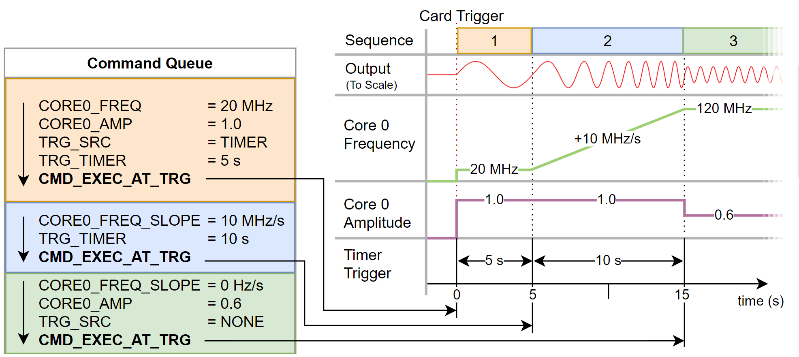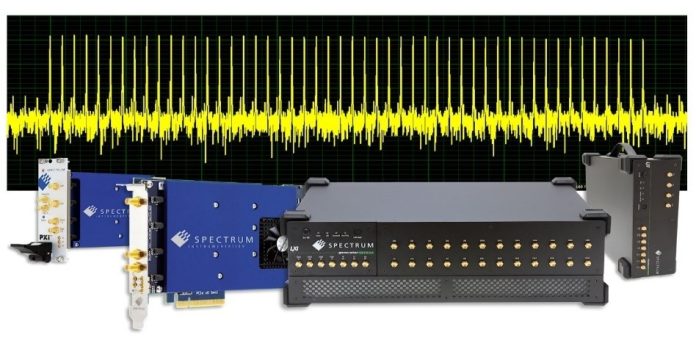Spectrum Instrumentation launches a family of DDS Generators named the 96xx series, forming a new product category in the company’s portfolio. The new DDS Instruments offer up to 50 sine wave carriers on one single output channel. This feature provides a new way for engineers and scientists to produce and independently control multi-tone sine signals. DDS, which is short for “Direct Digital Synthesis”, is a powerful technique for generating high-purity signals (typically sinewave cores, also called carriers or tones) with ultrafast switching between output frequencies and fine frequency resolution. The products can produce multiple tones, covering a broad range of operating frequencies up to 200 MHz. It makes them uniquely agile signal sources that are suitable for demanding applications in industries such as biomedicine, communications, semiconductors and quantum science.
Link to the product video (5 min): https://youtu.be/FEzjhXFNfF0
The 96xxs series comprises 12 different models in three different formfactors; PCIe cards, PXIe modules and Ethernet instruments. A single PCIe or PXIe card can produce up to 50 different low-phase-noise variable-frequency tones and is available with up to 4 channels. The stand-alone Ethernet instruments offer from 2 to 24 channels. For applications needing more than 50 tones, the larger NETBOX units support up to 300, or it is possible to connect multiple cards together with the Star Hub synchronization module to create systems with up to 400 tones. All models provide integrated output amplifiers with programmable signal amplitudes up to ±2.5 V into 50 Ohm loads, or ±5 V for high-impedance.
Extremely fast parameter changes
The speed at which these products can change the characteristics of a tone is what makes them different to conventional signal generators. Fully programmable, changes can be made using simple commands almost instantly. New settings for a tone’s frequency, amplitude and phase as well as amplitude slopes and frequency slopes can be initiated during runtime, or via preloaded sequences of DDS commands. Millions of DDS commands can be stored in the on-board memory. Setting changes can be triggered externally, or by an internal timer, or immediately on command. No transition jitter or glitches appear and the timing resolution for sequencing commands is as small as just 6.4 nanoseconds.
DDS controls waveforms in Test and Measurement, Communications and Quantum
The 96xx series DDS generators provide an easy and programmable way for users to produce trains of waveforms, frequency sweeps or finely-tuneable references of various frequencies and profiles. Applications can be found in industrial, medical and imaging systems, network analysis or even communication technology where data is encoded using phase and frequency modulation on a carrier. Another application is the control of lasers through AODs and AOMs, as often used in quantum experiments. Laser control can be made at very high speeds with just a few simple commands – this is in contrast to the more processing-intensive method that uses an Arbitrary Waveform Generator (AWG) and demands large data array calculations. Issuing a small series of slope commands, the user can control advanced functions like s-shaped or custom-shaped frequency transitions, custom pulse envelopes, AM or FM modulation and more.

Easy system integration
Running under Windows or Linux operating systems, the 96xx series DDS generators can be programmed using programming examples for C++, Python, C#, JAVA, LabVIEW, MATLAB and others as well as a high-level Python API‘s that provide an easy way to control the products.
Two instruments in one
Should there ever be a need to generate more complex waveforms, the 96xx series can also be converted into a fully functional AWG. A firmware option is available that switches the DDS Generator into an AWG, allowing the replay of arbitrary waveforms on all active channels synchronously. Operating modes such as Single Shot, Loop, Single Restart, Multiple Replay, Gated Replay, Streaming (FIFO) or Sequence Replay are all supported.

